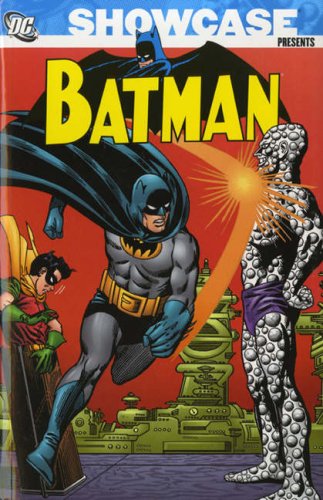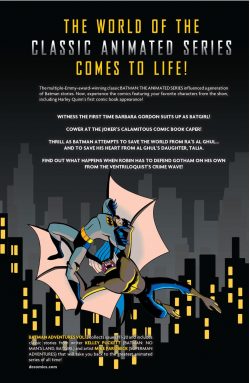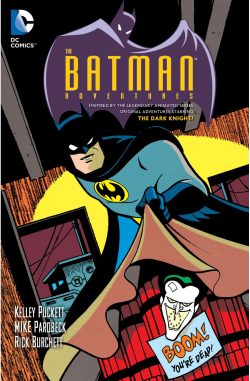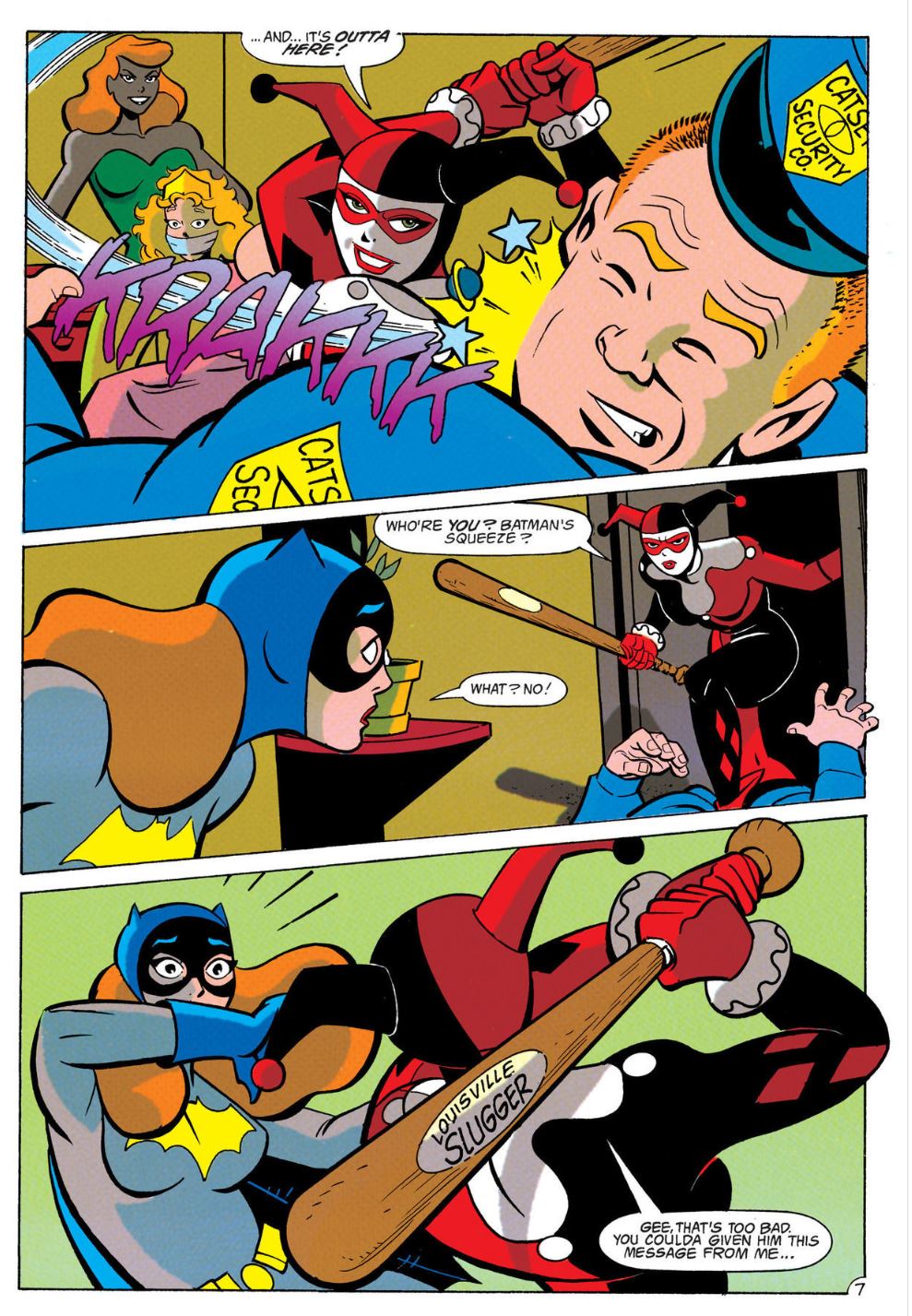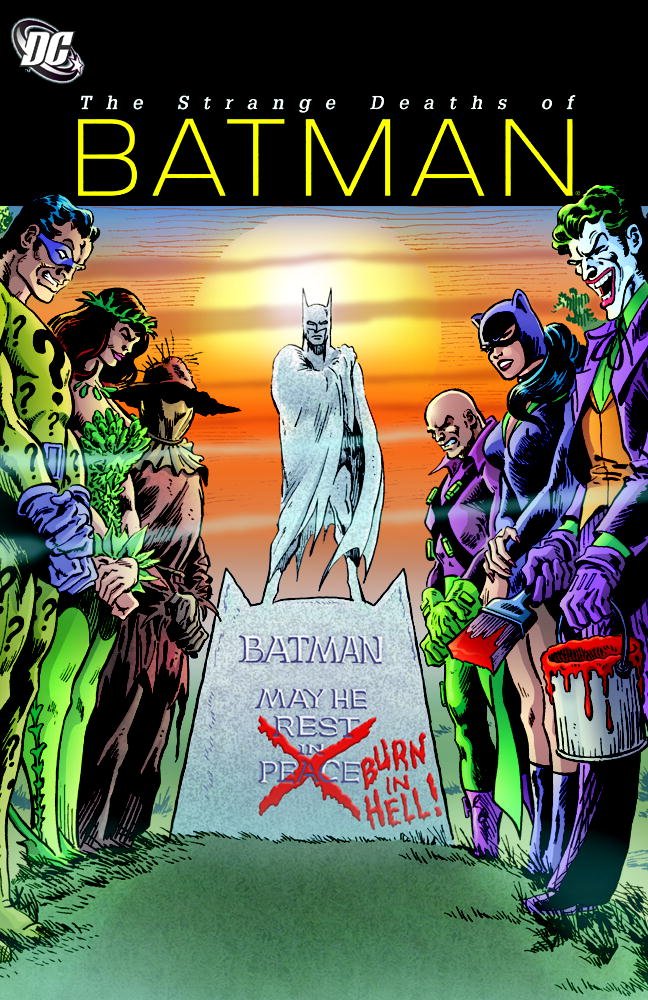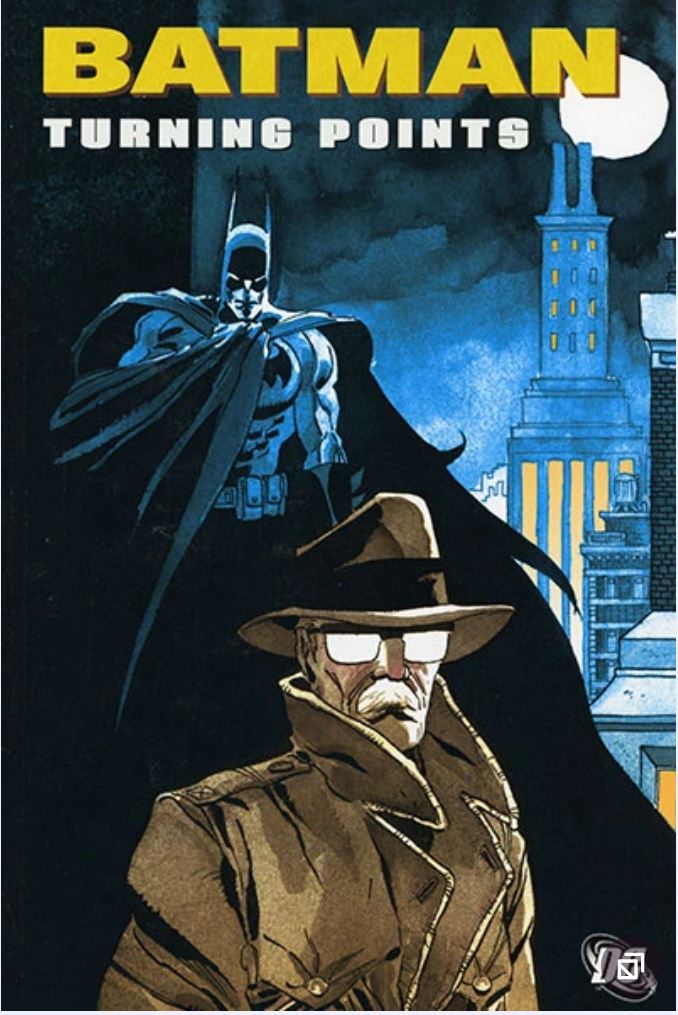
By Whitney Ellsworth, Joe Giella, Sheldon Moldoff, Carmine Infantino, Bob Powell, Werner Roth, Curt Swan & various (Library of American Comics)
ISBN: 987-1-61377-845-6 (HB)
Last century in America the newspaper comic strip was the Holy Grail all cartoonists and graphic narrative storytellers aspired to and hungered for; syndicated across the country and the planet. Always a prime tool of circulation-building, strips won millions of readers and were regarded (in most places) as a more mature and sophisticated form of literature than comic books.
They also paid better, and the Holiest of Holies was a full-colour Sunday page, so it was always something of a poisoned chalice if comic book characters became so popular that they swam against the tide and became a syndicated serial strip. After all, weren’t funnybooks invented just to reprint the strips in cheap accessible form?
Both Superman and Wonder Woman made the jump soon after their debuts and many features have done so since. Due to numerous war-time complications, the Batman and Robin newspaper strip was slow getting its shot, but when the Dynamic Duo finally hit the comics section of papers, the feature proved to be one of the best-regarded, highest quality examples of the trend, both in Daily and Sunday formats (and we’ll be covering what collections there are of those landmarks quite soon in this Dark Knight anniversary year).
The 1940s strips never achieved the circulation they deserved, but the Sundays were latterly given a new lease of life when DC began including selected episodes in the 1960s Batman 80-Page Giants and Annuals. Those exceedingly high-quality adventures were ideal short stories, adding an extra cachet of exoticism for youngsters captivated by simply seeing their heroes in tales that were positively ancient and redolent of History with a capital “H”.
Such was not the case as the decade proceeded when, for a relatively brief moment, humanity went bananas for superheroes in general but most especially went “Bat-Mad”…
Comic books’ Silver Age utterly revolutionised a creatively moribund medium cosily snoozing in unchallenging complacency, bringing a modicum of sophistication to the returning genre of masked mystery men. For quite some time the changes instigated by Julius Schwartz in Showcase #4 (October 1956) had rippled out to affect all National/DC Comics’ superhero characters but generally passed by Batman and Robin. Fans buying Detective Comics, Batman, World’s Finest Comics and latterly Justice League of America read exploits that – in look and tone – were largely unchanged from safely anodyne fantasies that had turned the Dark Knight into a mystery-solving, alien-fighting costumed Boy Scout after the 1940s turned into the 1950s.
By the end of 1963, however, Schwartz having – either personally or by example – revived and revitalised the majority of DC’s line (and, by extension and imitation, the entire industry) with his reinvention of the Superhero, was asked to work his magic with the creatively stalled nigh-moribund Caped Crusaders.
Shepherding his usual team of top-notch creators, the Editor stripped down the core-concept, downplaying the ETs, outlandish villains and daft transformations, bringing cool modernity to the capture of criminals and overseeing a streamlining rationalisation of the art style itself. The most apparent change to us kids was a yellow circle around the Bat-symbol but, far more importantly, the stories similarly changed as a subtle aura of genuine menace had crept back in. At the same time Hollywood was in production of a television series based on Batman and, through the sheer karmic insanity that permeates the universe, the studio executives were basing their interpretation upon the addictively daft material DC was emphatically turning its editorial back on rather than the “New Look Batman” currently enthralling readers.
The Batman TV show premiered on January 12th 1966 and ran for three seasons of 120 episodes, airing twice weekly for the first two. It was a monumental, world-wide hit and sparked a wave of imitation. Resulting media hysteria and fan frenzy generated an insane degree of Bat-awareness, no end of spin-offs and merchandise – including a movie – and introduced us all to the phenomenon of overkill. No matter how much we might squeal and foam about it, even 60 years later, to a huge portion of this planet’s population Batman is always going to be that “Zap! Biff! Pow!” buffoonish Boy Scout in a mask…
“Batmania” exploded across the world and almost as quickly became toxic and vanished, but at its height sparked a fresh newspaper strip incarnation. The strip was a huge syndication success and even reached fuddy-duddy Britain, not in our papers and journals but as the cover feature of weekly comic Smash! (with the 20th issue onwards).
Overwhelmingly successful, Batman’s TV show ended in March 1968. As it foundered and faded away, the global fascination with “camp” superheroes – and no, the term had nothing to do with sexual orientation no matter what you and Mel Brooks might suspect about Men in Tights – burst as quickly as it had boomed and the Caped Crusader was left with a hard core of dedicated fans and followers who now wanted their hero back…
From the time when the Gotham Guardians could do no wrong comes this superb collection re-presenting the bright and breezy, intentionally zany cartoon classics, augmented by a wealth of background material, topped up with oodles of unseen scenes and detail to delight the most ardent Baby-boomer nostalgia-freaks.
It opens with an astonishingly informative and astoundingly picture-packed, candidly cool introduction from comics historian Joe Desris entitled ‘A History of the Batman and Robin Newspaper Strip’, stuffed with a wealth of newspaper promotional materials, premiums and giveaways, sketches, comic book covers and the lowdown on how the strip was coordinated to work in conjunction with the regular comic books. The Dailies and Sundays were all scripted by former DC writer/editor – and the company’s Hollywood liaison/producer – Whitney Ellsworth (Tillie the Toiler, Congo Bill) and initially illustrated by Bob Kane’s long-term secret art collaborator Sheldon Moldoff, before inker Joe Giella was tapped by the TV studio to provide a slick, streamlined modern look in the visuals – frequently as penciller but ALWAYS as embellisher.
Since the feature was a 7-day-a-week job, Giella often called in few comicbook buddies to help lay-out and draw the strip; luminaries such as Carmine Infantino, Bob Powell, Werner Roth, Curt Swan and more…
Back then, black-&-white Dailies and full-colour Sundays were usually offered as separate packages with continuity strips often generating different storylines for each. With Batman the strip started out that way, but switched to unified 7-day continuities in December 1966.
For convenience, this collection begins with the Sunday-only yarns. As on TV, the first villain du jour was a certain top-hatted raucous raptor…
‘Penguin Perpetrated a Prank’ (May 29th – July 10th 1966) saw the Fowl Felon and masked moll Beulah go on a rather uninspired crime spree, after which ‘The Nasty Napoleon’ (July 17th – October 16th) introduced a pint-sized plunderer with larcenous intent and delusions of military grandeur. Moldoff was replaced by Giella &Infantino at the end of August, if you were wondering…
Contemporarily “Swinging England” was almost as big a craze as Batman so it was no surprise the Dynamic Duo would hop across The Pond to meet well-meaning but bumbling imitators ‘Batchap and Bobbin’, fighting crime in the sleepy hamlet of Lemon Regis (October 23rd – December 18th) after which the Sundays were incorporated into the working week storylines.
Monochrome Dailies launched on May 30th: Ellsworth & Moldoff kicking off with a healthy dose of sex & violence as ‘Catwoman is a Wily Wench’ (running to July 9th 1966) saw the sultry bandit easily captured only to break out of jail and go on a vengeance-fuelled spree intended to end Batman’s career and life. Next came ‘Two Jokers and a Laughing Girl’ (July 11th – September 24th) wherein the Clown Prince of Crime is paroled into the custody of Bruce Wayne, whilst covertly robbing Gotham blind by employing a body-double. As Giella took over the art chores, it took a guest shot from Superman to iron out that macabre miscreant’s merry muddle.
Claiming to have been robbed of his rightfully stolen loot, the Wily Bird brigand became ‘Penguin the Complainant’ (September 26th – October 8th), demanding his greatest enemies and the Gotham police catch a modern-day pirate plaguing him. That led in turn to a flotilla of fists and foolishness as Batman & Robin began ‘Flying the Jolly Roger’ (October 10th – December 9th), after which Daily and Sunday segments unified as our courteous but severely outmatched Chivalrous Crusaders faced their greatest challenge from a trio of college girls: The Ivy League Dropouts. The co-ed crooks and their floral field commander seen in ‘The Sizzling Saga of Poison Ivy’ (December 10th 1966 – March 17th 1967) were unrelated to the psychotic poisoner created by Robert Kanigher in Batman #181 (June 1966) in all but name…
Like its TV counterpart, the strip began increasingly featuring real-world guest stars and the bad girls’ scheme to plunder hospitality magnate Conrad Hilton‘s latest enterprise – The Batman Hilton – led to comedic cross-dressing hijinks, a doomed affair for Bruce and plenty of publicity for all concerned…
The guest policy was expanded in ‘Jack Benny’s Stolen Stradivarius’ (March 18th – April 30th) as the infamously penny-pinching comedian promised Gotham’s Gangbusters a $1000-an-hour stipend (for charity, of course) to recover his fiddle and insisted on accompanying them everywhere to ensure they worked at top speed…
A major character debuted in ‘Batgirl Ain’t your Sister’ (May 1st – July 9th) with a masked mystery woman prowling the night streets. She was beating up plenty of baddies but their loot never seemed to be recovered…
With no clues and nothing to go on, all Batman & Robin could do was masquerade as crooks and rob places in hopes of being caught by the “Dominoed Daredoll”, but by the time they found each other The Riddler had involved himself, planning to kill everybody and keep all that accumulated loot for himself…
Riding a wave and feeling ambitious, Ellsworth & Giella began their longest saga yet as ‘Shivering Blue Max, “Pretty Boy” Floy and Flo’ (July 10th 1967 – March 18th 1968 and ending in the next book) saw a perpetually hypothermic criminal pilot accidentally down the Batcopter and erroneously claim the underworld’s million dollar bounty on Batman & Robin. The heroes were not dead, but the crash had caused the Caped Crusader to lose his memory. As Robin and faithful manservant Alfred sought to remedy his affliction, Max collected his prize and jetted off for sunnier climes. With Batman missing, neophyte crimebuster Batgirl tracked down the heroes – incidentally learning their secret identities – and was instrumental in restoring him to action… if not quite his full functioning faculties.
When underworld paymaster BG (Big) Trubble heard the heroes had returned he quite understandably instituted procedures to get his money back, forcing Max to return to Gotham where he stupidly fell foul of Pretty Boy before that hip young gunsel and his sister Flo kicked off a murderous scheme to fleece a horoscope-addicted millionaire…
To Be Continued and concluded, Bat-Fans…
Supplementing the parade of guilty pleasures is a copious, comprehensive and fabulously educational section on ‘Notes on Stories in this Volume’ – also generously illustrated with covers, photos and show-&-strip arcana – as well as a fascinating behind-the-scenes display highlighting editorial corrections and alterations to the strips required by those ever-so-fussy TV studio people. Everything then ends for now with a schematic key to ‘The Batman Cast’ as depicted on the back cover.

The stories in this compendium reflect gentler times and an editorial policy focusing as much on broad humour as Batman’s reputation as a manhunter, so the colourful, psychotic costumed super-villains are in a minority here, but if you’re of a certain age or open to fun-over-thrills this a collection well worth your attention.
Batman: Silver Age Dailies and Sundays 1966-1967 was the first of huge (305 x 236 mm) lavish, high-end hardback collections starring the Gotham Gangbusters, and another crucial addition to the superb commemorative series of Library of American Comics which has preserved and re-presented in luxurious splendour such landmark strips as Li’l Abner, Tarzan, Little Orphan Annie, Terry and the Pirates, Bringing Up Father, Rip Kirby, Polly and her Pals and many other cartoon icons. Hopefully one day they will all be available digitally too…
If you love the era, or simply the medium of serial graphic narratives, these stories are great comics reading, and this is a book you must have.
© 2014 DC Comics. All Rights Reserved. Batman and all related characters and elements ™ & © DC Comics.









